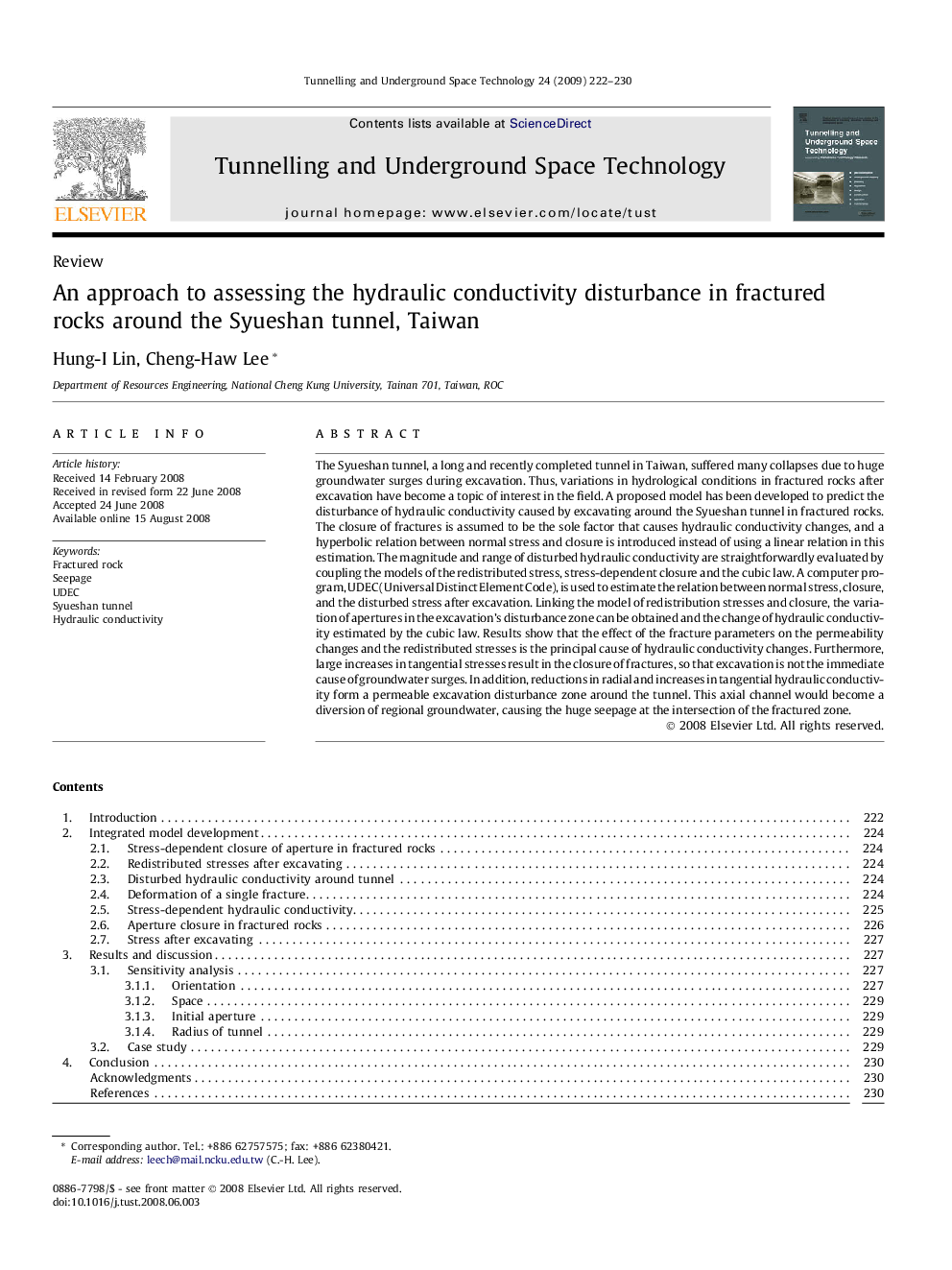| کد مقاله | کد نشریه | سال انتشار | مقاله انگلیسی | نسخه تمام متن |
|---|---|---|---|---|
| 311983 | 534164 | 2009 | 9 صفحه PDF | دانلود رایگان |

The Syueshan tunnel, a long and recently completed tunnel in Taiwan, suffered many collapses due to huge groundwater surges during excavation. Thus, variations in hydrological conditions in fractured rocks after excavation have become a topic of interest in the field. A proposed model has been developed to predict the disturbance of hydraulic conductivity caused by excavating around the Syueshan tunnel in fractured rocks. The closure of fractures is assumed to be the sole factor that causes hydraulic conductivity changes, and a hyperbolic relation between normal stress and closure is introduced instead of using a linear relation in this estimation. The magnitude and range of disturbed hydraulic conductivity are straightforwardly evaluated by coupling the models of the redistributed stress, stress-dependent closure and the cubic law. A computer program, UDEC (Universal Distinct Element Code), is used to estimate the relation between normal stress, closure, and the disturbed stress after excavation. Linking the model of redistribution stresses and closure, the variation of apertures in the excavation’s disturbance zone can be obtained and the change of hydraulic conductivity estimated by the cubic law. Results show that the effect of the fracture parameters on the permeability changes and the redistributed stresses is the principal cause of hydraulic conductivity changes. Furthermore, large increases in tangential stresses result in the closure of fractures, so that excavation is not the immediate cause of groundwater surges. In addition, reductions in radial and increases in tangential hydraulic conductivity form a permeable excavation disturbance zone around the tunnel. This axial channel would become a diversion of regional groundwater, causing the huge seepage at the intersection of the fractured zone.
Journal: Tunnelling and Underground Space Technology - Volume 24, Issue 2, March 2009, Pages 222–230